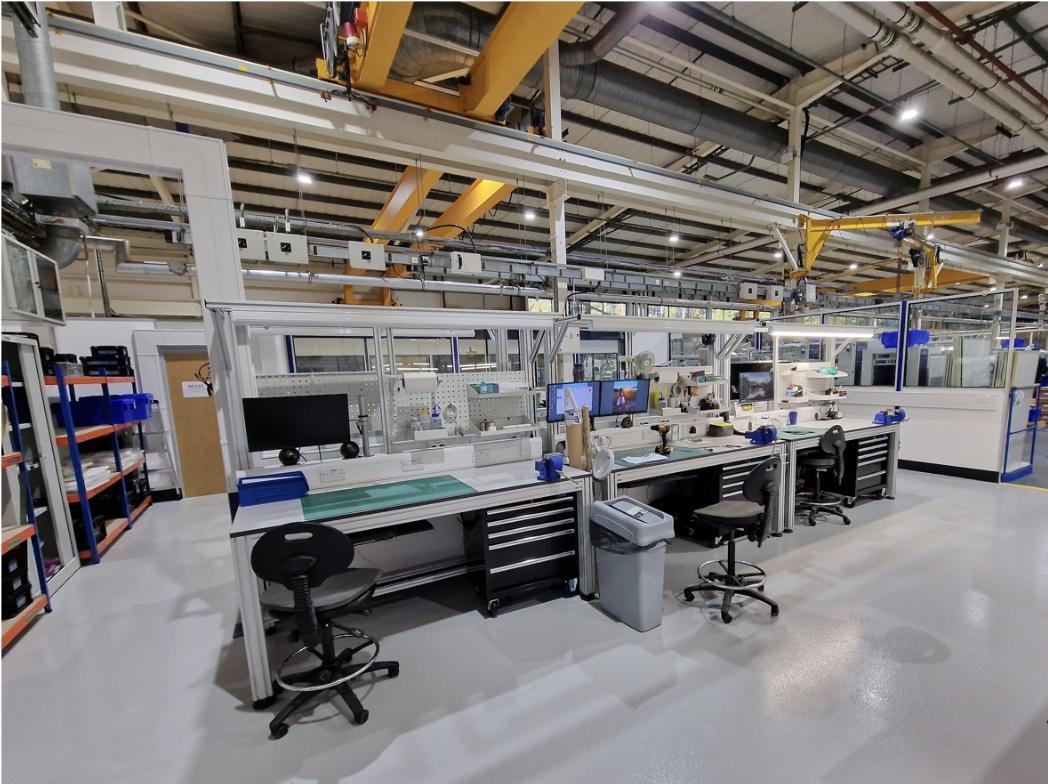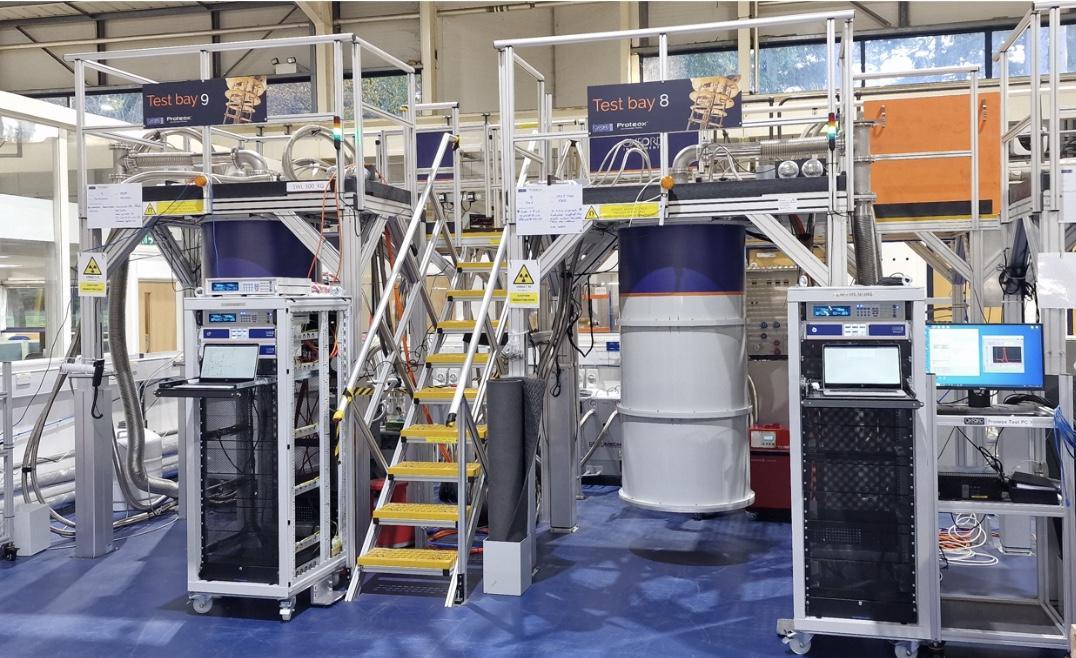Applications
 Part of the Oxford Instruments Group
Part of the Oxford Instruments Group
Expand
Collapse
By Justin Elford, Director of Manufacturing at Oxford Instruments NanoScience
Two years into our project to reconfigure our UK factory, I wanted to share an update on progress so far. It’s a significant undertaking, but we have been able to celebrate some early wins. As part of the overall factory operation and supply chain optimisation, we have halved the lead times on some of our product lines, as well as created a world-class build area for our latest product, the ProteoxQX, our largest ever modular dilution refrigerator system.
Getting ready for ProteoxQX
With our first order now in process it’s an exciting time. ProteoxQX will be an essential tool for research and development in quantum computing, allowing our customers to deploy more physical qubits than ever before.
To deliver the capability needed for the ProteoxQX we have created a new build area, upgraded the power to the factory as well as a number of other facilities to support the growth of this and other product lines. There were also certain material handling challenges due to the size of the vessels that are common between the operations and Service teams. We are now implementing similar solutions in the factory to those we are providing to our customers.
Reconfiguring our production lines
The factory reconfiguration has been aligned to our five year strategic plan driving the business’s growth. From our analysis of the future volume, it was clear our existing setup would not have been able to cope with the variety and capacity we would need later this decade. In our old factory layout, different processes like fabrication, wiring and testing were siloed into separate areas, making production inflexible.
We made the decision to reorganise the factory into five “value streams” – or production lines. Each stream contains all processes from start to end for one product. This allows each team to scale independently as needed. It also streamlines production by eliminating delays between process steps. Once you look at how to optimise each product line you gain efficiency and see the opportunities for cross training and talent development.

Figure 1: New “Inserts and DU area” cell layout
Priming our supply chain and cross training the team
Reconstructing the factory is one part of a larger strategic puzzle. It’s not the complete answer to reducing lead time, but it is helping significantly. A few of our other initiatives include better priming of the supply chain including extending our use of kanban processes so that we are constantly replenishing key components. Cross training our team means that our workers have multiple skill sets so there are fewer single point failures. We have better capacity now to flex as per the needs of the business. Finally, we are reviewing our end to end order process, from order entry through to installation, actively looking for potential efficiency gains. This process will be continuous.
Gains for production so far
An outcome of the work to date is that our flagship product, Proteox, has seen its lead time reduced by 50%. This was achieved through training workers across multiple roles and optimising workflow and supply chain material feed. Additionally, investment in our magnet infrastructure with new reaction ovens has allowed us to improve our lead time.
Improving quality as well as lead times
In addition, our robust process improvement means that we are improving our quality standards overall. For example, implementing more automatic testing means that our testing process can continue outside of normal working hours, reducing our testing time frame while improving stringency. We are capturing more data and interrogating data trends to see how we can improve our first time pass rate, which increases our ability to reduce lead times.

Figure 2: Test bays in the Proteox line
More efficiencies to come
While we’re only ~40% of the way through the factory layout project, even those lines that aren’t yet complete, are seeing the first benefits. For example, the TeslatronPT product line is in a hybrid phase. We have put the team together collectively, but we have not completely laid the line out yet. On the Teslatron product, we have managed to reduce our lead time by approximately two thirds and there are more efficiencies to come once the line is fully reconstructed.
I have worked at Oxford Instruments for 21 years, and have seen a lot of change over that time to both factory and product. When you’re looking at infrastructure, the easy decision is to simply “tweak” what already exists. But as a business, we have taken the decision to take a deep breath and solve challenges for the longer term – which means a much more involved project to completely overhaul the layout.
I’m proud to be part of a team that is prepared to take the tougher course of action that is correct for the betterment of the business. The effort that has been required for the reconfiguration - and that’s still required to complete it - is well worth it. We achieved a record output last year. But just as importantly, our employees are more engaged and excited about the future of our operations and our renewed ability to serve our customers.